Beko RCNA320K20W User manual [EN,ES,FR,DE,UK,IT,RU]
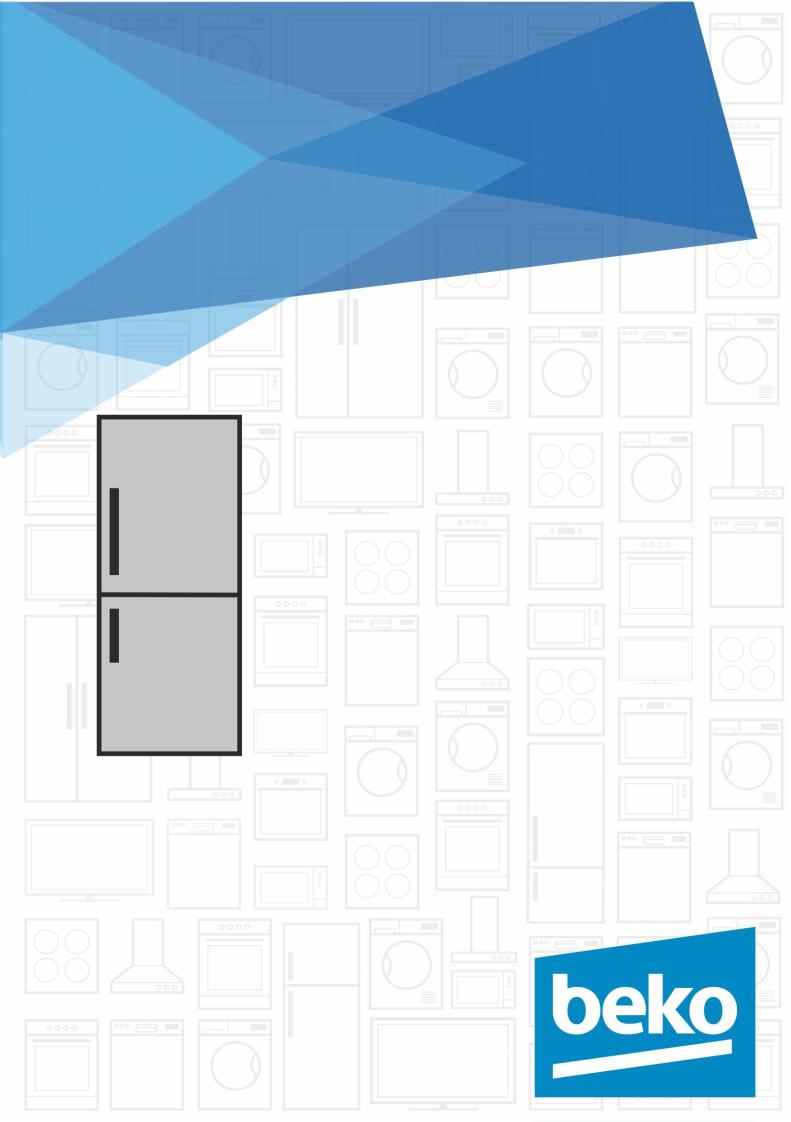
Frost Free Refrigerator-Freezer type I
Frost Free Refrigerador-Congelador de tipo I Refrigerateur-Congelateur type I
Frost-Free Kühl-Gefrier-Typ I
Незамерзаюче Холодильник-Морозильник типу I
Frost Free Frigo-Congelatore di tipo I
Незамерзающее Холодильник-Морозильник Типа I
Instruction of use Instrucciones para el uso
Notice d’utilisation
Gebrauchsanweisung
Інструкція з експлуатації
Istruzioni per l'uso
Руководство по эксплуатации
RCNA320K20W
ENIESIFRIDIUAIITIRU

WARNING!
In order to ensure a normal operation of your refrigerating appliance, which uses a completely environmentally friendly refrigerant the R600a (flammable only under certain conditions) you must observe the following rules:
Do not hinder the free circulation of the air around the appliance.
Do not use mechanical devices in order to accelerate the defrosting, others than the ones recommended by the manufacturer.
Do not destroy the refrigerating circuit.
Do not use electric appliances inside the food keeping compartment, other than those that might have been recommended by the manufacturer.
ADVERTENCIA !
Para asegurarse del funcionamiento normal de vuestro refrigerador, conteniendo le refrigerante R600a que contribuye a la protección del ámbito (inflamable sólo en ciertas condiciones), le conviene a respectar las reglas siguientes :
No impide la circulación del aire alrededor del aparato.
No utilize utensilios mecánicos o otros dispositivos para acelerar el proceso de descongelación otros de los recomendados por el fabricante.
No cause daño al circuito refrigerante.
No utilize aparatos eléctricos en el interior de los compartimentos de la conservación de los alimentos, si estos no están conformes con el tipo de aparato recomendado por el fabricante.
ATTENTION!
Pour assurer un fonctionnement normal de votre appareil qui utilise un agent frigorifique écologique, R600a (infammable seulement sous certaines conditions) vous devez respecter les règles suivantes:
N’empêchez pas la libre circulation de l’air autour de l’appareil.
N’ utilisez pas des dispositifs mécaniques pour accélérer le dégivrage, autres que ceux récommendés par le fabriquant.
Ne détruissez pas le circuit frigorifique.
N’utilisez pas des appareils électiques à l’intérieur du compartiment pourconserver les aliments, hormis celles qui sont éventuellement récommendés par le fabriquant.
WARNUNG!
Ihr Gerät verwendet ein umweltverträgliches Kältemittel, R600a (nur unter bestimmten Umständen brennbar). Um einen einwandfreien Betrieb Ihres Gerätes sicherzustellen, beachten Sie bitte folgende Vorschriften:
Die Luftzirkulation um das Gerät darf nicht behindert sein.
Verwenden Sie außer der vom Hersteller empfohlenen, keine mechanischen Hilfsmittel, um den Abtauprozess zu beschleunigen.
Der Kältemittelkreislauf darf nicht beschädigt werden.
Verwenden Sie im Lebensmittelaufbewahrungsbereich Ihres Gerätes keine elektrischen Geräte, es sei denn, sie sind vom Hersteller empfohlen.
УВАГА!
Для того, щоб забезпечити нормальну роботу Вашого холодильника, в якому використовується охолоджуючий реагент R600a, абсолютно нешкідливий для навколишнього середовища (займається лише за певних умов), Вам Необхідно дотримуватися наступних правил..
Не створюйте перепон для вільної циркуляції повітря навколо холодильника.
Не користуйтесь жодними механічними пристроями та інструментами для видалення льоду під час розморожування холодильника, окрім тих, що рекомендовані виробником.
Не допускайте пошкодження охолоджуючого контура.
Не встановлюйте всередину холодильного відділення, де зберігаються продукти, жодних електричних пристроїв, окрім тих, що рекомендовані виробником.
AVVERTENZA!
Per garantire il funzionamento adeguato dell'elettrodomestico, che utilizza il refrigerante R600a completamente adatto all'ambiente (infiammabile solo in determinate condizioni), è necessario attenersi alle seguenti regole:
Non ostacolare la libera circolazione dell'aria attorno all'elettrodomestico.
Per accelerare lo sbrinamento non utilizzare dispositivi meccanici diversi da quelli consigliati dal produttore.
Non danneggiare il circuito refrigerante.
Non utilizzare all'interno del comparto del cibo elettrodomestici diversi da quelli consigliati dal produttore.
ВНИМАНИЕ
Для того, чтобы обеспечить нормальную работу Вашего холодильника в котором используется охлаждающий реагент R600a, совершенно безвредный для окружающей среды (воспламеняющийся только в определенных условиях), Вам следует соблюдать следующие правила.
Не создавайте препятствий для свободной циркуляции воздуха вокруг холодильника.
Не пользуйтесь никакими механическими приспособлениями и инструментами для удаления льда при размораживании холодильника, коме тех, которые рекомендованы изготовителем.
Не допускайте повреждения охлаждающего контура.
Не устанавливайте внутрь холодильного отделения, где хранятся продукты, никакие электрические устройства, кроме тех, которые рекомендованы изготовителем.

EN Index
Safety first /1
Electrical requirements /2 Transportation instructions /2 Installation instructions /2 Getting to know your appliance /3
Suggested arrangement of food in the appliance /3 Temperature control and adjustment /3
Before operating; Storing frozen food /4 Freezing fresh food; Making ice cubes /4 Defrosting /4
Replacing the interior light bulb /5 Cleaning and care /5 Repositioning the door /5
Do’s and don’ts /6
Energy Consumption /6
Information concerning the noises /7 Troubleshooting /7
ES Índice
La seguridad es lo primero /8 Requisitos eléctricos /9 Instrucciones de transporte /9 Instrucciones de instalación /9 Detalles del electrodoméstico /10
Disposición recomendada de los alimentos en el frigorífico /10 Control y ajuste de la temperatura /10
Antes del uso /11
Almacenamiento de alimentos congelados /11 Congelación de alimentos frescos /11 Cubitos de hielo /11
Deshielo /12
Sustitución de la bombilla interior /12 Conservación y limpieza /12 Reposicionamiento de la puerta /13 Prácticas correctas e incorrectas /13 Consumo energético /14 Información referente al ruido /15 Resolución de problemas /15
FR Index
La sécurité d’abord ! /16 Conditions électriques /17
Instructions de transport; Instructions d’installation /17 Apprendre à connaître votre appareil /18
Suggestion d’agencement des denrées dans l’appareil /18 Commande de température et réglage /18
Avant l’utilisation /19
Conservation des denrées surgelées /19 Congélation des produits frais /19 Fabrication de glaçons /19
Dégivrage /20
Remplacement de l'ampoule intérieure /20 Nettoyage et entretien /20 Repositionnement de la porte /21 Consommation énergétique /21
A faire / A ne pas faire /22
Informations concernant les éventuels bruits /23
D Inhalt
Wichtige Hinweise für Ihre Sicherheit ! /24 Elektrischer Anschluss /25 Transporthinweise; Aufstellen /25
Lernen Sie Ihr neues Gerät kennen /26
Empfohlene Lagerung von Lebensmitteln im Gerät /26 Temperaturkontrolle und –einstellung /27
Vor der Inbetriebnahme /27 Lagerung von Tiefkühlkost /27 Frische Lebensmittel tiefkühlen /28 Herstellung von Eiswürfeln /28 Abtauen /28
Austausch der Innenbeleuchtung /28 Reinigung und Pflege /29
Wechseln des türanschlags /29
Was Sie tun sollten und was auf keinen fall-einige Hinweise /29 Energieverbrauch /30
Hinweise zu Geräuschen und Vibrationen /31 Massnahmen bei Betriebstőrunger /31
UA Зміст
Безпека передусім! /32 Порядок підключення до електромережі /33 Інструкції з транспортування /33
Інструкції щодо встановлення /33 Короткий опис приладу /34
Рекомендації щодо розміщення продуктів у холодильнику /34 Контроль і регулювання температури /34 Перед експлуатацією /35 Зберігання заморожених продуктів /35 Заморожування свіжих продуктів /35 Приготування кубиків льоду /35 Розморожування /36
Заміна лампочки внутрішнього освітлення /36 Чищення та догляд /36 Перенавішування дверцят /37 Що слід і чого не слід робити /37 Енергоспоживання /38
Інформація щодо робочих шумів /39 Усунення несправностей /39
IT Indice
Innanzitutto la sicurezza! /40
Requisiti elettrici ; Istruzioni per il trasporto /41 Istruzioni di installazione /41
Conoscere l'elettrodomestico /42 Suggerimenti sulla disposizione del cibo
nell'elettrodomestico /42
Controllo e regolazione della temperatura /42 Prima della messa in funzione /43 Conservazione di cibo congelato /43 Preparazione dei cubetti di ghiaccio /43 Sbrinamento /44
Sostituzione della lampadina interna /44 Pulizia e manutenzione /44 Riposizionamento dello sportello /45
Cosa fare e cosa non fare /45 Consumo energetico /46
Informazioni sui rumori di funzionamento /46 Risoluzione dei problemi /46
RU Coдepжаниe
Безопасность прежде всего /47 Требования к электропитанию /48 Инструкция по транспортировке /48 Инструкция по установке /48 Ознакомление с прибором /49 Рекомендуемый способ размещения
продуктов в холодильнике /49 Контроль и регулировка температуры /50 Перед началом работы /50 Хранение замороженных продуктов /50
Замораживание свежих продуктов /51 Приготовление кубиков льда /51 Размораживание /51 Замена лампочки внутреннего освещения /52
Чистка холодильника и уход за ним /52 Перевешивание двери /52 Что следует и чего не следует делать /53 Энергопотребление /54 Вибрация и шум /54
Устранение неисправностей /55
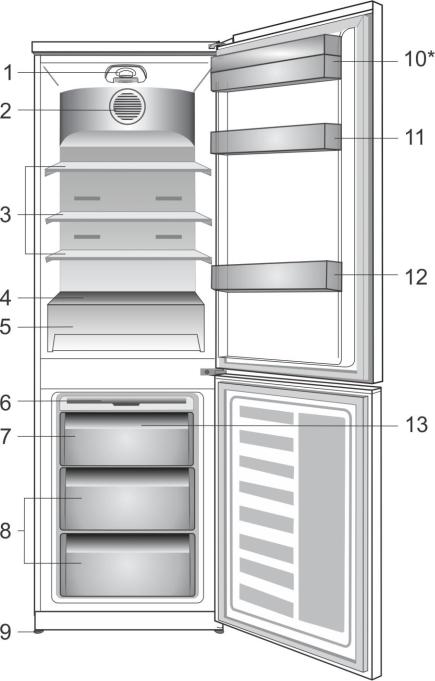
1
 Figures that take place in this instruction manual are schematic and may not correspond exactly with your product. If the subject parts are not included in the product you have purchased, then it is valid for other models.
Figures that take place in this instruction manual are schematic and may not correspond exactly with your product. If the subject parts are not included in the product you have purchased, then it is valid for other models.
 Las ilustraciones incluidas en el presente manual de instrucciones son esquemáticas y puede que no se adecúen a su aparato con exactitud. Si alguno de los elementos reflejados no se corresponde con el aparato que usted ha adquirido, entonces será válido para otros modelos.
Las ilustraciones incluidas en el presente manual de instrucciones son esquemáticas y puede que no se adecúen a su aparato con exactitud. Si alguno de los elementos reflejados no se corresponde con el aparato que usted ha adquirido, entonces será válido para otros modelos.
 Les illustrations présentées dans cette notice d’utilisation sont schématiques et peuvent ne pas correspondre exactement à votre produit. Si certains éléments illustrés ne sont pas inclus dans le produit que vous avez acheté, ils concerneront d’autres modèles.
Les illustrations présentées dans cette notice d’utilisation sont schématiques et peuvent ne pas correspondre exactement à votre produit. Si certains éléments illustrés ne sont pas inclus dans le produit que vous avez acheté, ils concerneront d’autres modèles.
 Abbildungen und Angaben in dieser Anleitung sind schematisch und können etwas von Ihrem Gerät abweichen. Falls Teile nicht zum Lieferumfang des erworbenen Gerätes zählen, gelten sie für andere Modelle.
Abbildungen und Angaben in dieser Anleitung sind schematisch und können etwas von Ihrem Gerät abweichen. Falls Teile nicht zum Lieferumfang des erworbenen Gerätes zählen, gelten sie für andere Modelle.
 Ілюстрації в даній інструкції є схематичними і можуть відрізнятися від вашої моделі. Якщо до комплектації моделі, яку ви придбали, не входять згадані деталі, вони призначені для інших моделей.
Ілюстрації в даній інструкції є схематичними і можуть відрізнятися від вашої моделі. Якщо до комплектації моделі, яку ви придбали, не входять згадані деталі, вони призначені для інших моделей.
 Le illustrazioni contenute in questa guida sono schematiche e potrebbero non corrispondere esattamente al prodotto in uso. Se le parti in oggetto non sono incluse nel prodotto acquistato, significa che sono da intendersi per altri modelli.
Le illustrazioni contenute in questa guida sono schematiche e potrebbero non corrispondere esattamente al prodotto in uso. Se le parti in oggetto non sono incluse nel prodotto acquistato, significa che sono da intendersi per altri modelli.
 Иллюстрации в данной инструкции являются схематичными и могут отличаться от вашей модели. Если в приобретенном вами изделии нет каких-либо из показанных компонентов, значит, они используются в других моделях.
Иллюстрации в данной инструкции являются схематичными и могут отличаться от вашей модели. Если в приобретенном вами изделии нет каких-либо из показанных компонентов, значит, они используются в других моделях.
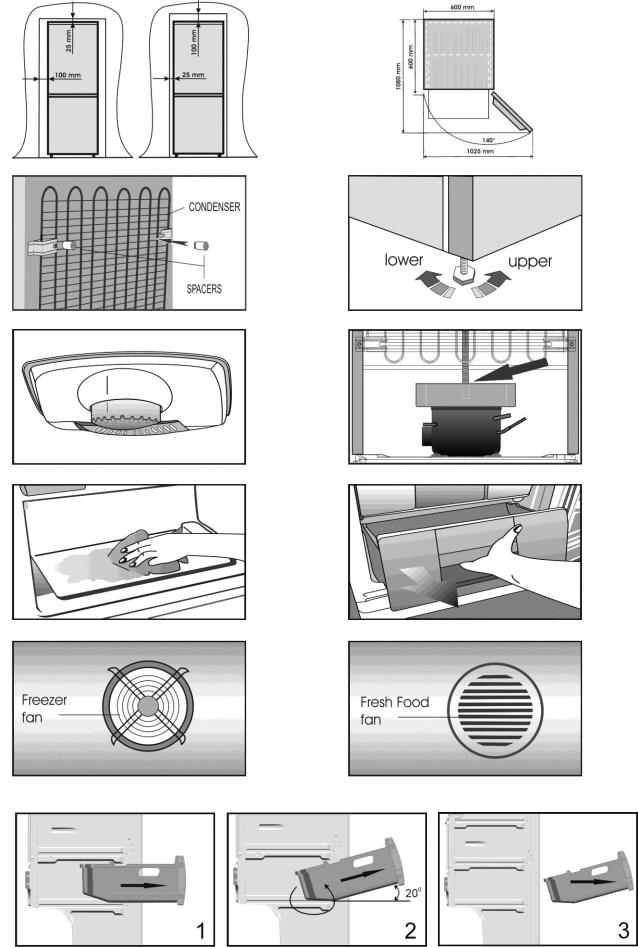
2
3 |
4 |
5 |
6 |
7 |
8 |
9 |
10 |
11
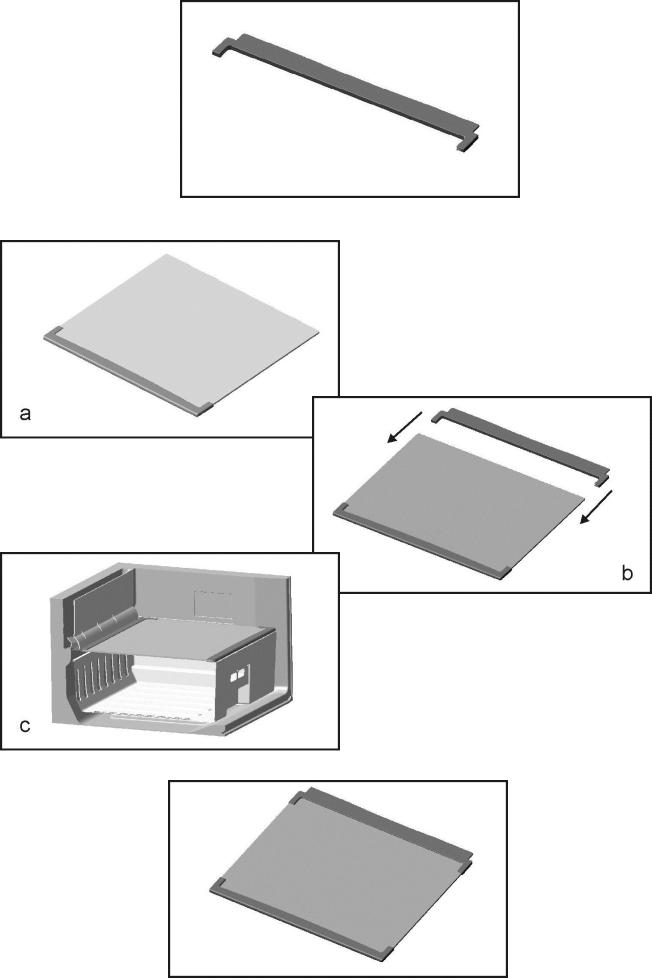
12
13
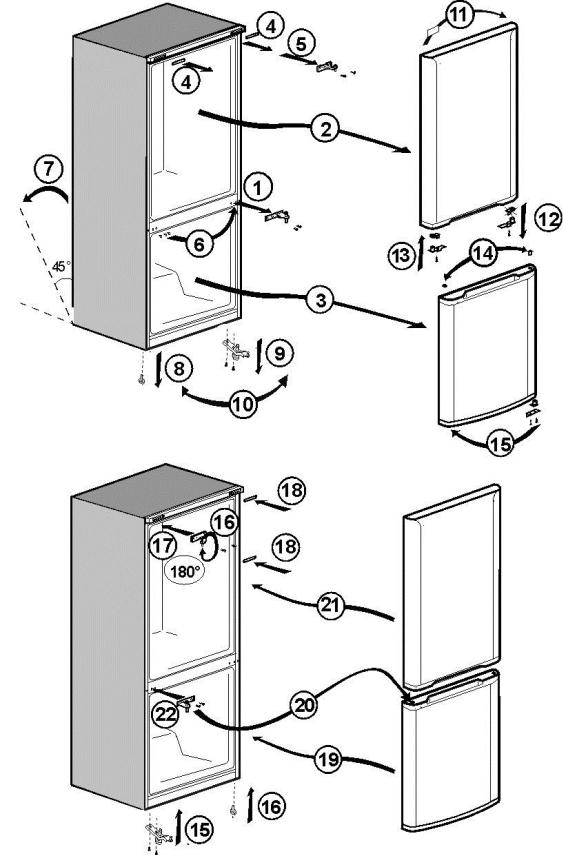
14

EN |
Instruction for use |
|
|
Congratulations on your choice of a BEKO Quality
Appliance, designed to give you many years of service.
Safety first!
Do not connect your appliance to the electricity supply until all packing and transit protectors have been removed.
•Leave to stand for at least 4 hours before switching on, to allow compressor oil to settle, if transported horizontally.
•If you are discarding an old appliance with a lock or latch fitted to the door, ensure that it is left in a safe condition to prevent the entrapment of children.
•This appliance must only be used for its intended purpose.
•Do not dispose of the appliance on a fire. Your appliance contains non CFC substances in the insulation which are flammable. We suggest you contact your local authority for information on disposal and available facilities.
•We do not recommend use of this appliance in an unheated, cold room. (e.g. garage, conservatory, annex, shed, out-house etc.)
To obtain the best possible performance and trouble free operation from your appliance it is very important to read these instructions carefully. Failure to observe these instructions may invalidate your right to free service during the guarantee period.
Please keep these instructions in a safe place for easy reference.
Original Spare parts will be provided for 10 years, following the product purchasing date.
This appliance is not intended for use by person with reduced physical, sensory or mental capabilities or lack of experience and knowledge unless they have been given supervision or instruction concerning use of the appliance by a person responsible for their safety.
Children should be supervised to ensure that they do not play with the appliance.
1
EN |
Instruction for use |
|
|
Electrical requirements
Before inserting the plug into the wall socket make sure that the voltage and the frequency shown in the rating plate inside the appliance corresponds to your electricity supply.
We recommend that this appliance is connected to the mains supply via a suitably switched and fused socket in a readily accessible position.
Warning! This appliance must be earthed.
Repairs to electrical equipment should only be performed by a qualified technician. Incorrect repairs carried out by an unqualified person are carry risks that may have critical consequences for the user of the appliance.
ATTENTION!
This appliance operates with R600a which is an environmental friendly but flammable gas. During the transportation and fixing of the product, care must be taken not to damage the cooling system. If the cooling system is damaged and there is a gas leakage from the system, keep the product away from open flame sources and ventilate the room for a while.
WARNING - Do not use mechanical devices or other means to accelerate the defrosting process, others than those recommended by the manufacturer.
WARNING - Do not damage the refrigerant circuit. WARNING - Do not use electrical appliances inside the food storage compartments of the appliance, unless they are of the type recommended by the manufacturer.
WARNING - If the supply cord is damaged, it must be replaced by the manufacturer, its service agent or similarly qualified persons in order to avoid a hazard.
Transportation instructions
1.The appliance should be transported only in an upright position. The packing as supplied must be intact during transportation.
2.If during the transport the appliance, has been positioned horizontally, it must not be operated for at least 4 hours, to allow the system to settle.
3.Failure to comply with the above instructions could result in damage to the appliance, for which the manufacturer will not be held liable.
4.The appliance must be protected against rain, moisture and other atmospheric influences.
Important!
•Care must be taken while cleaning/carrying the appliance not to touch the bottom of the condenser metal wires at the back of the appliance, as this could cause injury to fingers and hands.
•Do not attempt to sit or stand on top of your appliance as it is not designed for such use. You could injure yourself or damage the appliance.
•Make sure that the mains cable is not caught under the appliance during and after moving, as this could damage the cable.
•Do not allow children to play with the appliance or tamper with the controls.
Installation instructions
1.Do not keep your appliance in a room where the temperature is likely to fall below -15 degrees C (5 degrees F) at night and/or especially in winter.
2.Do not place the appliance near cookers or radiators or in direct sunlight, as this will cause extra strain on the appliance's functions. If installed next to a source of heat or freezer, maintain the following minimum side clearances: From Cookers 30 mm
From Radiators 300 mm From Freezers 25 mm
3.Make sure that sufficient room is provided around the appliance to ensure free air circulation
(Item 2).
• Put the back airing lid to the back of your refrigerator to set the distance between the refrigerator and the wall (Item 3).
4.The appliance should be positioned on a smooth surface. The two front feet can be adjusted as required.To ensure that your appliance is standing upright adjust the two front feet by turning clockwise or anti-clockwise, until firm contact is secured with the floor. Correct adjustment of feet prevents excessive vibration and noise (Item 4).
5.Refer to "Cleaning and Care" section to prepare your appliance for use.
2

EN |
Instruction for use |
|
|
Getting to know your appliance
(Item 1)
1 - Setting knob and interior light
2 - Fresh Food fan
3 - Adjustable Cabinet shelves
4 - Crisper cover
5 - Fresh zone compartment/ Crispers
6 - Ice tray support & ice tray
7 - Compartment for quickly freezing
8 - Compartments for frozen froods keeping
9 - Adjustable foot
10 - Dairy Compartment*
11 - Shelf for jars
12 - Shelf for bottles
13 - Freezer fan
*Optional
The fans has the purpose to provide the circulation of the air in compartment. It is connected in parallel with the motor-compressor. When the motor-compressor is off, the fans will also be off.
10.Fizzy drinks should not be frozen and products such as flavoured water ices should not be consumed too cold.
11.Some fruit and vegetables suffer damage if kept at temperatures near 0°C. Therefore wrap pineapples, melons, cucumbers, tomatoes and similar produce in polythene bags.
12.High-proof alcohol must be stored upright in tightly closed containers. Never store products that contain an inflammable propellant gas (e.g. cream dispensers, spray cans, etc.) or explosive substances. These are an explosion hazard.
13.To take out the baskets from the freezer compartment please proceed as in Item 11.
14.In order to transform the chill compartment (used for easy perishable products - Item 1-point 5) into a vegetable box it is necessary to assembly in the rear side of the bottom glass shelf the ornament (Item 12) delivered as accessory according to the picture Item 13 (point a-c).
If the ornament will be not assembled the compartment (Item 1-point 5) will have biofresh functionality.
Suggested arrangement of food in the appliance
Guidelines for obtaining optimum storage and hygiene:
1. The fridge compartment is for the short-term storage of fresh food and drinks.
2. The freezer compartment is rated and suitable for the freezing and storage of pre-frozen food.
The recommendation for  storage as stated on the food packaging should be observed at all times.
storage as stated on the food packaging should be observed at all times.
3.Dairy products should be stored in the special compartment provided in the door liner.
4.Cooked dishes should be stored in airtight containers.
5.Fresh wrapped produce can be kept on the shelf.
7.To store raw meat, wrap in polythene bags and place on the lowest shelf. Do not allow to come into contact with cooked food, to avoid contamination. For safety, only store raw meat for two to three days.
8.For maximum efficiency, the removable shelves should not be covered with paper or other materials to allow free circulation of cool air.
9.Do not keep vegetable oil on door shelves. Keep the food packed, wrapped or covered. Allow hot food and beverages to cool before refrigerating. Leftover canned food should not be stored in the can.
Temperature control and adjustment
Operating temperatures are controlled by the setting knob (Item 5) located on the ceiling of fridge compartment. Settings may be made from min, 1 ...
6, max, max being the coldest position.
When the appliance is switched on for the first time, the setting knob should be adjusted so that after 24 hours, the average fridge temperature is no higher than +5°C (+41°F). We recommend you set the knob half way between the min and max setting and monitor to obtain the desired temperature i. e. towards max you will obtain a colder fridge temperature and vice versa. Some sections of the fridge may be cooler or warmer (such as the salad crisper and the top part of the cabinet) which is quite normal.
The normal storage temperature of the freezer should be -18°C (0°F). Lower temperatures may be obtained by adjusting setting knob towards max position.
We recommend that you check the temperature with an accurate thermometer to ensure that the storage compartments are kept to the desired temperature.
Remember you must take your reading very quickly since the thermometer temperature will rise very rapidly after you remove it from the freezer.
3
EN |
Instruction for use |
|
|
Please remember each time the door is opened cold air escapes and the internal temperature rises. Therefore never leave the door open and ensure it is closed immediately after food is put in or removed.
Before operating
Final Check
Before you start using the appliance check that: 1. The feet have been adjusted for perfect levelling.
2. The interior is dry and air can circulate freely at the rear.
3. The interior is clean as recommended under
"Cleaning and care.”
4. The plug has been inserted into the wall socket and the electricity is switched on. When the door is open the interior light will come on.
And note that:
5. You will hear a noise as the compressor starts up. The liquid and gases sealed within the refrigeration system may also make some (noise), whether the compressor is running or not. This is quite normal.
6. Slight undulation of the top of the cabinet is quite normal due to the manufacturing process used; it is not a defect.
7. We recommend setting the knob midway and monitor the temperature to ensure the appliance maintains desired storage temperatures (See section Temperature Control and Adjustment). 8. Do not load the appliance immediately it is switched on. Wait until the correct storage temperature has been reached. We recommend checking the temperature with an accurate thermometer (see; Temperature Control and Adjustment).
Storing frozen food
Your freezer is suitable for the long-term storage of commercially frozen foods and also can be used to freeze and store fresh food.
If there is a power failure, do not open the door. Frozen food should not be affected if the failure lasts for less than 19 hrs. If the failure is longer, then the food should be checked and either eaten immediately or cooked and then re-frozen.
Freezing fresh food
Please observe the following instructions to obtain the best results.
Do not freeze too large a quantity at any one time. The quality of the food is best preserved when it is frozen right through to the core as quickly as possible.
Do not exceed the freezing capacity of your appliance in 24 h.
Placing warm food into the freezer compartment causes the refrigeration machine to operate continously until the food is frozen solid. This can temporarily lead to excessive cooling of the refrigeration compartment.
When freezing fresh food, to reach the best freezing capacity, put the setting knob to maximum position 24h before placing it. After freezing the knob can be set to the initial position. Small quantities of food up to 1/2 kg. (1 lb) can be frozen without adjusting the temperature control knob.
Take special care not to mix already frozen food and fresh food.
Making ice cubes
Fill the ice - cube tray 3/4 full with water and place it in the freezer. Loosen frozen trays with a spoon handle or a similar implement; never use sharpedged objects such as knives or forks.
Defrosting
A) Fridge compartment
The fridge compartment defrosts automatically. The defrost water runs to the drain tube via a collection container at the back of the appliance. Check that the tube is permanently placed with its end in the collecting tray on the compressor to prevent the water spilling on the electric installation or on the floor (Item 6).
B) Freezer compartment
The NO FROST type defrost is compleetly automatic. No intervention from your side is requiered. The water is colected on the compressor tray. Due the heat of the compressor the water is evaporated.
Do not use pointed or sharp-edged objects, such as knives or forks to remove the frost.
Never use hairdryers, electrical heaters or other such electrical appliances for defrosting. Sponge out the defrost water collected in the bottom of the freezer compartment. After
defrosting, dry the interior thoroughly (Item 7 & 8). Insert the plug into the wall socket and switch on the electricity supply.
4
EN |
Instruction for use |
|
|
Warnings!
The fans inside the freezer and fresh food compartments circulates cold air. Never insert any object through the guard. Do not allow children to play with the fresh food andfreezer fan.
Never store products that contain inflammable propellant gas (eg dispensers, spray cans etc.) or explosive substances.
Don’t cover the shelves with any protective materials, which may obstruct air circulation.
Do not allow children to play with the appliance or tamper with the controls.
Do not obstruct the fan guards to ensure that you obtain the best possible performance from your appliance. (Item 9 and Item 10)
Warning!
Your appliance is fitted with a circulating fan which is essential for the performance of the refrigerator. Please ensure the fans are not blocked (stopped) or impaired by food or packaging. Blocking (stopping) or impairing the fan can result in an increase of the internal freezer temperature (Thawing).
Replacing the interior light bulb
To change the lamp used for illumination of your refrigerator, please call your Authorized Service. The lamp(s) used in this appliance is not suitable for household room illumination. The intended purpose of this lamp is to assist the user to place foodstuffs in the refrigerator/freezer in a safe and comfortable way.
The lamps used in this appliance have to withstand extreme physical conditions such as temperatures below -20°C.
Cleaning and care
1.We recommend that you switch off the appliance at the socket outlet and pull out the mains plug before cleaning.
2.Never use any sharp instruments or abrasive substances, soap, household cleaner, detergent or wax polish for cleaning.
3.Use luke warm water to clean the cabinet of the appliance and wipe it dry.
4.Use a damp cloth wrung out in a solution of one teaspoon of bicarbonate of soda to one pint of water to clean the interior and wipe it dry.
5.Make sure that no water enters the temperature control box.
6.If the appliance is not going to be used for a long period of time, switch it off, remove all food, clean it and leave the door ajar.
5
7.We recommend that you polish the metal parts of the product (i.e. door exterior, cabinet sides) with a silicone wax (car polish) to protect the high quality paint finish.
8.Any dust that gathers on the condenser, which is located at the back of the appliance, should be removed once a year with a vacuum cleaner.
9.Check door seals regularly to ensure they areclean and free from food particles.
10.Never:
•Clean the appliance with unsuitable material; eg petroleum based products.
•Subject it to high temperatures in any way,
•Scour, rub etc., with abrasive material.
11.Removal of dairy cover and door tray :
•To remove the dairy cover, first lift the cover up by about an inch and pull it off from the side where there is an opening on the cover.
•To remove a door tray, remove all the contents and then simply push the door tray upwards from the base.
12.Make sure that the special plastic container at the back of the appliance which collects defrost water is clean at all times. If you want to remove the tray to clean it, follow the instructions below:
•Switch off at the socket outlet and pull out the mains plug
•Gently uncrimp the stud on the compressor, using a pair of pliers, so that the tray can be removed
•Lift it up.
•Clean and wipe it dry
•Reassemble, reversing the sequence and operations
13.To remove a drawer, pull it as far as possible, tilt it upwards and then pull it out completely.
Repositioning the door
Proceed in numerical order (Item 14).
EN |
Instruction for use |
|
|
Do’s and don’ts
Do- Clean your appliance regularly.
Do- Keep raw meat and poultry below cooked food and dairy products.
Do- Take off any unusable leaves on vegetables and wipe off any soil.
Do- Leave lettuce, cabbage, parsley and cauliflower on the stem.
Do- Wrap cheese firstly in greaseproof paper and then in a polythene bag, excluding as much air as possible. For best results, take out of the fridge compartment an hour before eating.
Do- Wrap raw meat and poultry loosely in polythene or aluminium foil. This prevents drying.
Do- Wrap fish and offal in polythene bags.
Do- Wrap food with a strong odour or which may dry out, in polythene bags, or aluminium foil or place in airtight container.
Do- Wrap bread well to keep it fresh.
Do- Chill white wines, beer, lager and mineral water before serving.
Do- Check contents of the freezer every so often. Do- Keep food for as short a time as possible
and adhere to "Best Before" and "Use by" etc. dates.
Do- Store commercially frozen food in accordance with the instructions given on the packets.
Do- Always choose high quality fresh food and be sure it is thoroughly clean before you freeze it.
Do- Prepare fresh food for freezing in small portions to ensure rapid freezing.
Do- Wrap all food in aluminium foil or freezer quality polythene bags and make sure any air is excluded.
Do- Wrap frozen food immediately after purchasing and put it in to the freezer as soon as possible.
Don’t- Store bananas in your fridge compartment.
Don’t- Store melon in your fridge. It can be chilled for short periods as long as it is wrapped to prevent it flavouring other food.
Don’t- Cover the shelves with any protective materials which may obstruct air circulation.
Don’t- Store poisonous or any dangerous substances in your appliance. It has been designed for the storage of edible foodstuffs only.
6
Don’t- Consume food which has been refrigerated for an excessive length of time.
Don’t- Store cooked and fresh food together in the same container. They should be packaged and stored separately.
Don’t- Let defrosting food or food juices drip onto food.
Don’t- Leave the door open for long periods, as this will make the appliance more costly to run and cause excessive ice formation.
Don’t- Use sharp edged objects such as knives or forks to remove the ice.
Don’t- Put hot food into the appliance. Let it cool down first.
Don’t- Put liquid-filled bottles or sealed cans containing carbonated liquids into the freezer, as they may burst.
Don’t- Exceed the maximum freezing loads when freezing fresh food.
Don’t- Give children ice-cream and water ices direct from the freezer. The low temperature may cause 'freezer burns' on lips.
Don’t- Freeze fizzy drinks.
Don’t- Try to keep frozen food which has thawed; it should be eaten within 24 hours or cooked and refrozen.
Don’t- Remove items from the freezer with wet hands.
Energy Consumption
Maximum frozen food storage volume is achieved without using the middle and upper drawer provided in the freezer compartment. Energy consumption of your appliance is declared while the freezer compartment is fully loaded without using the middle and upper drawer.
Practical advice concerning the reduction of the electricity consumption.
1.Make sure that the appliance is located in wellventilated areas, far from any source of heat (cooker, radiator etc.). At the same time, the location of the appliance must be done in such a way that it prevents it to be under the direct incidence of the sunbeams.
2.Make sure that the food purchased in refrigerated/frozen condition is placed into the appliance as soon as possible, especially during summertime. It is recommended to use thermal insulated bags to transport the food home.
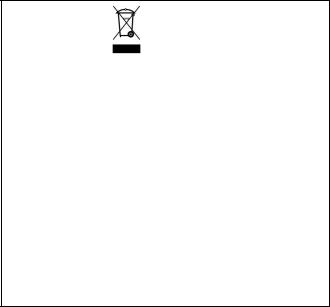
EN |
Instruction for use |
|
|
3.We recommend the thawing of the packets taken out from the freezer compartment be done in the refrigerator compartment. For this purpose, the packet which is going to be thawed will be placed in a vessel so that the water resulting from the thawing does not leak in the refrigerator compartment. We recommend you to start the thawing at least 24 hours before the use of the frozen food.
4.We recommend reducing the number of door openings to the minimum.
5.Do not keep the door of the appliance open more than necessary and make sure that after each opening the door is well closed.
Information concerning the noise and the vibrations which might appear during the operation of the appliance
1.The operation noise can increase during the operation.
- In order to keep the temperatures at the adjusted temperatures, the compressor of the appliance starts periodically. The noise produced by the compressor becomes stronger when it starts and a click can be heard when it stops.
- The performance and operation features of the appliance can change according to the modifications of the temperature of the ambient environment. They must be considered as normal.
2.Noises like liquids flowing or as being sprayed
-These noises are caused by the flow of the refrigerant in the circuit of the appliance and comply with the operation principle of the appliance.
3. Noise similar to wind blowing.
-It is generated by the fan (fans) with which your appliance is endowed. These fans help to the efficient cooling of the appliance. This noise is normal, not a defect.
4. Other vibrations and noises.
-The level of noise and vibrations can be caused by the type and the aspect of the floor on which the appliance is placed. Make sure that the floor does not have significant level distortions or if it can yield to the weight of the appliance (it is flexible).
-Another source of noise and vibrations is represented by the objects placed on the appliance. These objects must be removed from the appliance
-The bottles and the vessels placed in the refrigerator touching each other. In such cases move the bottles and the vessels so that there is a small distance between them.
Troubleshooting
If the appliance does not operate when switched on, check;
•That the plug is inserted properly in the socket and that the power supply is on. (To check the power supply to the socket, plug in another appliance)
•Whether the fuse has blown/circuit breaker has tripped/main distribution switch has been turned off.
•That the temperature control has been set correctly.
•That the new plug is wired correctly, if you have changed the fitted, moulded plug.
If the appliance is still not operating at all after above checks, contact the dealer from whom you purchased the unit.
Please ensure that above checks have been done, as a charge will be made if no fault is found.
The symbol on the product or on packaging indicates that this product may not be treated as household waste. Instead it shall be handed over to the applicable collection point for the recycling of electrical and electronic equipment. By ensuring this product is disposed of correctly, you will help prevent potential negative consequences for the environment and human health, which could otherwise be otherwise be caused by inappropriate waste handling of this product. For more detailed information about recycling of this product, please contact your local city office, you household waste disposal service or the shop where you purchased the product.
7

ES |
Instrucciones de uso |
|
|
Enhorabuena por haber elegido un electrodoméstico de alta calidad de BEKO, diseñado para prestar servicio durante muchos años.
La seguridad es lo primero
No conectar el frigorífico a la toma de corriente hasta que no se hayan retirado todos los protectores de embalaje y transporte.
•Si se transportó horizontalmente, dejar el frigorífico en posición normal al menos 4 horas antes de conectarlo, para que el aceite del compresor se asiente.
•Al deshacerse de un frigorífico antiguo con cerradura o pestillo en la puerta, comprobar que queda en una posición segura que impida que los niños puedan quedar atrapados.
•Este frigorífico sólo se debe utilizar para las funciones para las que se ha diseñado.
•No arrojar el frigorífico al fuego. Su aislamiento contiene sustancias inflamables sin CFC. Es recomendable ponerse en contacto con las autoridades locales para obtener información sobre residuos y centros de reciclaje.
•No se recomienda utilizar este frigorífico en lugares fríos sin calefacción. (Por ejemplo, garajes, invernaderos, cobertizos, cabañas, etc.)
Para conseguir un funcionamiento sin averías y el mejor rendimiento posible del frigorífico, es muy importante leer cuidadosamente estas instrucciones. El incumplimiento de estas instrucciones puede invalidar el derecho a obtener asistencia gratuita durante el periodo de garantía.
Conservar estas instrucciones en lugar seguro y donde puedan consultarse fácilmente.
Se proporcionarán piezas de recambio originales durante 10 años, después de la fecha de compra del producto.
Este aparato no ha sido diseñado para ser usado por personas con discapacidades físicas, sensoriales o mentales; tampoco para personas sin experiencia o conocimiento del aparato, a no ser que estén supervisadas o instruidas por alguien responsable de su seguridad.
Los niños deben de estar controlados para que no jueguen con el aparato.
8
ES |
Instrucciones de uso |
|
|
Requisitos eléctricos
Antes de conectar el enchufe a la toma de corriente, se debe comprobar que el voltaje y la frecuencia mostradas en la placa de características del interior del frigorífico se corresponden con los de la alimentación eléctrica. Se recomienda conectar este frigorífico a la red de suministro eléctrico mediante una toma de corriente adecuada, con fusible e interruptor y en una posición de fácil acceso.
Advertencia. Este frigorífico debe disponer de toma de tierra.
Las reparaciones del equipo eléctrico sólo deben ser realizadas por técnicos cualificados. Las reparaciones incorrectas realizadas por personal no cualificado comportan riesgos que pueden acarrear graves consecuencias al usuario del frigorífico.
¡ATENCIÓN!
Este electrodoméstico funciona con R600a, un gas respetuoso con el medio ambiente pero inflamable. Durante el transporte y la fijación del electrodoméstico, es necesario tener cuidado para no dañar el sistema de refrigeración. Si el sistema de refrigeración sufre algún daño y se produce una fuga de gases del sistema, mantenga el producto alejado de fuentes de ignición y ventile el recinto durante el tiempo adecuado.
ADVERTENCIA: Utilizar sólo los dispositivos mecánicos o los medios recomendados por el fabricante para acelerar el proceso de desescarchado.
ADVERTENCIA: Evitar daños en el circuito de refrigeración.
ADVERTENCIA: No utilizar aparatos eléctricos dentro de los compartimentos para alimentos del frigorífico, a menos que sean del tipo recomendado por el fabricante.
ADVERTENCIA: Si el cable de alimentación estuviera dañado, el fabricante, el servicio de atención al cliente o una persona cualificada deberán sustituirlo para evitar peligros.
Instrucciones de transporte
1.El frigorífico sólo se debe transportar en posición vertical. El embalaje debe quedar intacto tras el transporte.
2.Si el frigorífico ha estado colocado horizontalmente durante el transporte, no ponerlo en funcionamiento hasta después de pasadas al menos 4 horas, para permitir que el sistema se asiente.
3.El incumplimiento de estas instrucciones puede provocar daños en el frigorífico y el
fabricante no se considerará responsable de los mismos.
4.El frigorífico debe estar protegido de la lluvia, la humedad y demás agentes atmosféricos.
¡Importante!
• Se debe poner especial cuidado al limpiar o desplazar el frigorífico, para no tocar el extremo inferior de las láminas metálicas del condensador, que se encuentran en la parte trasera del aparato, ya que pueden provocar heridas en dedos y manos.
• No ponerse de pie ni sentarse en la parte superior del frigorífico, ya que no está diseñado para tal fin. Podría sufrir lesiones o causar daños al electrodoméstico.
• Comprobar que el frigorífico no queda apoyado sobre el cable principal durante ni después del desplazamiento, ya que puede dañar el cable.
• No permitir a los niños jugar con el frigorífico ni jugar con sus mandos.
Instrucciones de instalación
1.No tenga el aparato en estancias donde la temperatura pueda descender por debajo de los -
15°C (5 ºF) por la noche y/o especialmente en invierno.
2.No colocar el frigorífico cerca de cocinas o radiadores ni bajo la luz solar directa, ya que el hacerlo puede provocar una mayor carga para las funciones del frigorífico. Si se instala cerca de una fuente de calor o de un congelador, mantener las distancias laterales mínimas siguientes:
Con respecto a cocinas, 30 mm. Con respecto a radiadores, 300 mm.
Con respecto a congeladores, 25 mm.
3.Comprobar que hay espacio suficiente en torno al frigorífico para garantizar la circulación de aire
(figura 2).
• Poner la tapa de ventilación posterior en la parte trasera del frigorífico para comprobar la distancia entre el frigorífico y la pared (figura 3).
4.El frigorífico sólo se debe colocar sobre superficies lisas. Los dos pies delanteros se pueden ajustar si es necesario. Para garantizar la verticalidad del frigorífico, ajustar los dos pies delanteros girándolos a derecha o izquierda hasta que el contacto con el suelo sea firme y seguro. El ajuste correcto de los pies evita vibraciones o ruidos excesivos (figura 4).
5.Consultar la sección "Conservación y limpieza" para preparar el frigorífico para su utilización.
9
ES |
Instrucciones de uso |
|
|
Detalles del electrodoméstico
(Figura 1)
1 - Mando de ajuste y luz interior
2 - Ventilador de alimentos frescos
3 - Estantes interiores ajustables
4 - Tapa del cajón de frutas y verduras
5 - Compartimento para hielo/Cajones de frutas y verduras
6- Soporte de bandeja de hielo y bandeja de hielo
7- Compartimiento de congelación rápida
8- Compartimento de conservación de alimentos congelados
9- Pie ajustable
10- Compartimento de lácteos*
11- Estante para botes
12- Estante para botellas
13- Ventilador del congelador
*Opcional
Los ventiladores tienen el propósito de hacer circular el aire en su correspondiente compartimento. Se conecta a la vez que el motor compresor. Cuando el motor compresor esté apagado, los ventiladores también lo estarán.
Disposición recomendada de los alimentos en el frigorífico
Normas para conseguir el almacenamiento e higiene óptimos:
1.El compartimento frigorífico está destinado al almacenamiento de alimentos frescos y bebidas por un periodo de tiempo breve.
2.El compartimento congelador está clasificado
como  y es apto para congelar y almacenar alimentos precongelados.
y es apto para congelar y almacenar alimentos precongelados.
Se deben seguir siempre las recomendaciones
para el almacenamiento  que figuran en el envase de los alimentos.
que figuran en el envase de los alimentos.
3.Los productos lácteos deben almacenarse en el compartimento especial del revestimiento interior de la puerta.
4.Los platos preparados deben almacenarse en recipientes herméticos.
5.Los productos frescos envueltos pueden conservarse en el estante.
6.Las botellas se pueden conservar en la sección de la puerta.
7.Para almacenar carne cruda, envuélvala en bolsas de polietileno y colóquela en el estante inferior. No permita que la carne cruda entre en contacto con los alimentos cocinados, para evitar contaminaciones. Por seguridad, no almacene carne cruda durante periodos superiores a dos o tres días.
8.No cubra los estantes extraíbles con papel u otros materiales con el fin de permitir la libre circulación del aire y obtener así el máximo rendimiento.
9.No conserve aceite vegetal en los estantes de la puerta. Conserve los alimentos empaquetados, envueltos o cubiertos. Deje que los alimentos y las bebidas calientes se enfríen antes de introducirlos en el frigorífico. Los restos de alimentos enlatados no se deben almacenar dentro de sus latas.
10.No congele bebidas gaseosas. No consuma demasiado fríos productos tales como los helados de agua con sabores.
11.Algunas frutas y verduras se deterioran si se almacenan a temperaturas cercanas a 0 °C. Por lo tanto, las piñas, los melones, los pepinos, los tomates y productos similares deben envolverse en bolsas de polietileno.
12.Las bebidas alcohólicas de alta graduación se deben almacenar en posición vertical en recipientes bien cerrados. No almacene nunca productos que contengan gases inflamables (por ejemplo, botes de nata a presión, aerosoles, etc.) ni sustancias explosivas. Existe peligro de explosión.
13.Para extraer las cestas del compartimento congelador, proceda como en el figura 11.
14.Para transformar el compartimento de enfriamiento (usado para los productos fácilmente perecederos - figura 1-punto 5) en un cajón de frutas y verduras es necesario montar en la parte trasera del estante de cristal inferior el ornamento (figura 12) proporcionado como accesorio según la imagen figura 13 (punto a-c).
Si no va a montar el ornamento, el compartimento (figura 1 punto 5) tendrá funcionalidad biofresh.
Control y ajuste de la temperatura
El mando de ajuste (Figura 5), ubicado en el techo del compartimento frigorífico, permite controlar las temperaturas de funcionamiento. La temperatura se puede ajustar entre los valores mín., 1 a 6 y máx., siendo esta última la posición de mayor frío.
Al encender el aparato por primera vez, es preciso ajustar el mando de ajuste de manera que, transcurridas 24 horas, la temperatura media del frigorífico no supere los +5 °C (+41°F ). Recomendamos colocar el mando de ajuste en una posición intermedia entre el mínimo y el máximo e ir supervisando el frigorífico para obtener la temperatura deseada; las posiciones cercanas al máximo resultarán en temperaturas
10
ES |
Instrucciones de uso |
|
|
más bajas y viceversa. Algunas zonas del frigorífico estarán más calientes (como el cajón de frutas y verduras y la parte superior del compartimento refrigerador) o más frías, lo cual es perfectamente normal.
La temperatura normal de almacenamiento del congelador debe ser de –18 ºC (0 ºF). Es posible alcanzar temperaturas más bajas desplazando el mando del termostato hacia la posición máx.
Se recomienda comprobar la temperatura con un termómetro de precisión para asegurarse de que los compartimentos de almacenamiento se mantienen a la temperatura deseada.
Es necesario tomar la lectura inmediatamente, puesto que la temperatura del termómetro subirá muy rápidamente tras sacarlo del congelador. Recuerde que cada vez que se abre la puerta, el aire frío se escapa y la temperatura interna sube. Por consiguiente, no deje nunca la puerta abierta y asegúrese de que se cierra inmediatamente después de introducir o retirar alimentos.
Antes del uso
Comprobación final
Antes de empezar a utilizar el frigorífico, compruebe que:
1.Los pies se han ajustado hasta conseguir una nivelación perfecta.
2.El interior está seco y el aire circula libremente por la parte trasera.
3.El interior está limpio conforme a las recomendaciones de la sección “Conservación y limpieza”.
4.Se ha introducido el enchufe en la toma de corriente y se ha activado la electricidad. Cuando se abre la puerta, la luz interior se enciende.
Y tenga en cuenta que:
5.Se oye un ruido cada vez que el compresor se pone en funcionamiento. Los líquidos y gases del sistema de refrigeración también pueden hacer ruidos, esté o no el compresor en funcionamiento. Esto es perfectamente normal.
6.También es normal una ligera ondulación en la parte superior del armario debido al proceso de fabricación utilizado. No es un defecto.
7.Se recomienda colocar el mando de ajuste en la posición intermedia y supervisar la temperatura para asegurarse de que el frigorífico mantenga las temperaturas de conservación deseadas (consultar la sección "Control y ajuste de la temperatura").
8. No cargue el electrodoméstico inmediatamente después de encenderlo. Espere hasta que alcance la temperatura de conservación correcta. Se recomienda comprobar la temperatura con un termómetro de precisión (consultar la sección Control y ajuste de la temperatura).
Almacenamiento de alimentos congelados
El congelador es adecuado para almacenar alimentos precongelados durante periodos prolongados, así como para congelar y almacenar carne fresca.
Si se produce un corte de corriente, no abra la puerta. Los alimentos congelados no se verán afectados si el corte de corriente dura menos de 19 horas. Si dura más tiempo, se debe comprobar los alimentos para consumirlos inmediatamente o cocinarlos y congelarlos de nuevo.
Congelación de alimentos frescos
Para obtener los mejores resultados, se deben tener en cuenta las siguientes instrucciones. No congele grandes cantidades de una vez. La calidad de los alimentos se conserva mejor si la congelación alcanza su interior lo antes posible.
No supere la cantidad de alimentos que el aparato es capaz de congelar en 24 h.
Si se introducen alimentos calientes en el compartimento congelador, se obliga a la máquina de refrigeración a funcionar de forma continua hasta congelarlos totalmente. Esto puede provocar temporalmente un enfriamiento excesivo del compartimento de refrigeración.
Cuando vaya a congelar alimentos frescos, ponga el mando de ajuste en la posición de máximo frío 24 horas antes de depositar los alimentos para obtener la máxima capacidad de congelación. Una vez los alimentos estén congelados, puede volver a colocar el mando en su posición inicial. Las cantidades pequeñas de hasta 1/2 kg se pueden congelar sin necesidad de ajustar el mando de control de temperatura.
Ponga especial cuidado en no mezclar alimentos ya congelados con alimentos frescos.
Cubitos de hielo
Rellene la cubitera hasta 3/4 de su capacidad y colóquela en el congelador. Desprenda las bandejas congeladas con una cuchara o instrumento similar. No utilice nunca objetos con punta ni bordes afilados, como cuchillos o tenedores.
11
ES |
Instrucciones de uso |
|
|
Deshielo
A) Compartimento frigorífico
El compartimento del frigorífico se deshiela de manera automática. El agua del deshielo circula hasta el conducto de desagüe a través del recipiente de recogida situado en la parte trasera del frigorífico.
Compruebe que el extremo del tubo esté siempre colocado en la bandeja de recogida del compresor para evitar el derramamiento de agua sobre los componentes eléctricos o el suelo (Figura 6).
B) Compartimento congelador
El deshielo de tipo NO FROST (antiescarcha) es completamente automático. No requiere intervención alguna por su parte. El agua se recoge en la bandeja del compresor y posteriormente se evapora por acción del calor que éste desprende.
No utilice nunca objetos con punta o bordes afilados, como cuchillos o tenedores, para retirar el hielo.
No utilice nunca secadores de pelo, calentadores eléctricos u otros aparatos eléctricos similares para forzar el deshielo.
Recoja con una esponja el agua de deshielo depositada en la parte inferior del compartimento del congelador. Una vez finalizado el deshielo, seque completamente el interior (Figuras 7 y 8). Inserte el enchufe en la toma de corriente y encender el interruptor.
Avisos
Los ventiladores de los compartimentos congelador y frigorífico hacen circular aire frío. No introduzca nunca objetos a través del protector. No permita que los niños jueguen con los ventiladores de los compartimentos congelador y frigorífico.
No deposite nunca productos que contengan gases inflamables (por ejemplo, dosificadores, aerosoles, etc.) ni sustancias explosivas.
No cubra los estantes con ningún material protector que pueda obstruir la circulación del aire.
No permita a los niños jugar con el electrodoméstico ni manipular sus mandos.
No permita que se obstruyan los protectores de los ventiladores con el fin de obtener el mayor rendimiento posible del electrodoméstico.
(Figuras 9 y 10)
Advertencia
Su electrodoméstico dispone de un ventilador de circulación que es fundamental para el rendimiento del frigorífico. Asegúrese de que los ventiladores no se encuentran bloqueados (detenidos) o bloqueados por alimentos o paquetes. El entorpecimiento o bloqueo (detención) del ventilador puede derivar en un incremento de la temperatura interna del congelador (deshielo).
Sustitución de la bombilla interior
Para cambiar la lámpara que se utiliza para la iluminación de su refrigerador, por favor llame a su servicio técnico autorizado.
Las bombillas de este electrodoméstico no sirven para la iluminación en el hogar. Su propósito es el de ayudar al usuario a colocar los alimentos en el frigorífico o congelador de forma cómoda y segura.
Las lámparas utilizadas en este electrodoméstico deben soportan unas condiciones físicas extremas como temperaturas inferiores a -20º C.
Conservación y limpieza
1.Se recomienda desenchufar el frigorífico retirando el enchufe de la toma de corriente antes de realizar la limpieza.
2.No utilizar nunca en la limpieza instrumentos afilados o sustancias abrasivas, jabones, limpiadores domésticos, detergentes ni ceras abrillantadoras.
3.Utilizar agua tibia para limpiar el armario del frigorífico y secarlo con un paño.
4.Utilizar un paño humedecido con la solución de una cucharilla de café de bicarbonato sódico en un vaso grande de agua, para limpiar el interior. Secarlo con un trapo.
5.Asegurarse de que no entra agua en la caja de control de la temperatura.
6.Si no se va a utilizar el frigorífico durante un largo periodo, desenchufarlo, retirar toda la comida, limpiarlo y dejar la puerta entreabierta.
7.Se recomienda pulir las piezas de metal del producto (por ejemplo, la puerta exterior, los laterales del armario) con una cera de silicona (cera para coches) para proteger los acabados de alta calidad.
8.El polvo acumulado en el condensador, situado en la parte trasera del frigorífico, debe retirarse una vez al año con un aspirador.
9.Comprobar regularmente los cierres herméticos de la puerta para asegurarse de que estén limpios y sin restos de alimentos.
12
